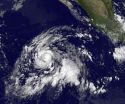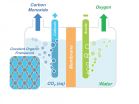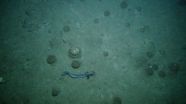US scientists warn leaders of dangers of thawing permafrost
International policymakers gather in Alaska to discuss Arctic challenges
2015-08-27
(Press-News.org) As President Obama and high-level representatives of other nations converge in Anchorage, Alaska on August 30-31 for the Conference on Global Leadership in the Arctic: Cooperation, Innovation, Engagement and Resilience (GLACIER), hosted by the U.S. Department of State, top U.S. climate scientists urge policymakers to address the critical problem of the thawing permafrost in the Arctic region.
Arctic permafrost - ground that has been frozen for many thousands of years - is now thawing because of global climate change, and the results could be disastrous and irreversible.
"The release of greenhouse gases resulting from thawing Arctic permafrost could have catastrophic global consequences," said Dr. Max Holmes, a Senior Scientist at the Woods Hole Research Center (WHRC) who has been advising State Department officials on the problem.
Thawing permafrost releases greenhouse gases (carbon dioxide and methane) into the atmosphere, which accelerates climate change, which in turn causes more thawing of the permafrost. This potentially unstoppable and self-reinforcing cycle could constitute a calamitous "tipping point."
WHRC scientists have counseled the State Department on policies that could control this problem, including reducing global carbon emissions from fossil fuel use and deforestation, and limiting emissions of "black carbon," sooty particles that darken snow and ice and hasten Arctic warming.
"Despite the importance and urgency of this problem, until now it has received little attention from policymakers," said Dr. Sue Natali, another WHRC scientist. A study published earlier this year by Dr. Natali and WHRC scientists estimated that greenhouse gases released from thawing permafrost could make it much more difficult to meet the widely held goal of limiting global warming to 2 degrees Celsius.
"The United States must lead a large-scale effort to find the tipping point - at what level of warming will the cycle of warming and permafrost thawing become impossible to stop," said Dr. Holmes. "The real and imminent threat posed by permafrost thawing must be communicated clearly and broadly to the general public and the policy community."
The key science points, implications and recommendations can be found in the WHRC Policy Brief, "Permafrost and Global Climate Change."
INFORMATION:
The Woods Hole Research Center (WHRC) is an independent research institute where scientists investigate the causes and effects of climate change to identify and implement opportunities for conservation, restoration and economic development around the globe. In June 2015, WHRC was ranked as the top independent climate change think tank in the world for the second year in a row. For more information, please visit whrc.org.
ELSE PRESS RELEASES FROM THIS DATE:
2015-08-27
Degenerating neurons in patients with Alzheimer's disease (AD) measurably responded to an experimental gene therapy in which nerve growth factor (NGF) was injected into their brains, report researchers at University of California, San Diego School of Medicine in the current issue of JAMA Neurology.
The affected neurons displayed heightened growth, axonal sprouting and activation of functional markers, said lead author Mark H. Tuszynski, MD, PhD, professor in the Department of Neurosciences, director of the UC San Diego Translational Neuroscience Institute and a neurologist ...
2015-08-27
Collisions with wind turbines kill about 100 golden eagles a year in some locations, but a new study that maps both potential wind-power sites and nesting patterns of the birds reveals sweet spots, where potential for wind power is greatest with a lower threat to nesting eagles.
Brad Fedy, a professor in the Faculty of Environment at the University of Waterloo, and Jason Tack, a PhD student at Colorado State University, took nesting data from a variety of areas across Wyoming, and created models using a suite of environmental variables and referenced them against areas ...
2015-08-27
TALLAHASSEE, Fla. -- Florida State University researchers have taken a big step forward in the fight against cancer with a discovery that could open up the door for new research and treatment options.
Fanxiu Zhu, the FSU Margaret and Mary Pfeiffer Endowed Professor for Cancer Research, and his team uncovered a viral protein in the cell that inhibits the major DNA sensor and thus the body's response to viral infection, suggesting that this cellular pathway could be manipulated to help a person fight infection, cancer or autoimmune diseases.
They named the protein KicGas.
"We ...
2015-08-27
Brief intervals of exercise during otherwise sedentary periods may offset the lack of more sustained exercise and could protect children against diabetes, cardiovascular disease and cancer, according to a small study by researchers at the National Institutes of Health
Children who interrupted periods of sitting with three minutes of moderate-intensity walking every half hour had lower levels of blood glucose and insulin, compared to periods when they remained seated for three hours. Moreover, on the day they walked, the children did not eat any more at lunch than on ...
2015-08-27
Washington, DC--People who developed Type 2 diabetes tended to take more antibiotics in the years leading up to the diagnosis than people who did not have the condition, according to a new study published in the Endocrine Society's Journal of Clinical Endocrinology & Metabolism.
A person develops diabetes, which is characterized by high blood sugar levels, when the individual cannot produce enough of the hormone insulin or insulin does not work properly to clear sugar from the bloodstream.
More than 29 million Americans have diabetes, according to the Society's Endocrine ...
2015-08-27
Washington, DC--Taking 3-minute breaks to walk in the middle of a TV marathon or other sedentary activity can improve children's blood sugar compared to continuously sitting, according to a new National Institutes of Health (NIH) study published in the Endocrine Society's Journal of Clinical Endocrinology & Metabolism (JCEM).
A sedentary lifestyle can put children at risk of developing pediatric obesity and metabolic health problems such as diabetes. Nearly 17 percent of children and teens nationwide are obese, according to the Society's Endocrine Facts and Figures report. ...
2015-08-27
Washington, DC--For years after it was administered, growth hormone continued to reduce the risk of fractures and helped maintain bone density in postmenopausal women who had osteoporosis, according to a new study published in the Endocrine Society's Journal of Clinical Endocrinology & Metabolism.
Osteoporosis is a progressive condition that causes the bones to become weak and more likely to break. More than 10 million American adults have osteoporosis, and 80 percent of the people being treated for the condition nationwide are women, according to the Society's Endocrine ...
2015-08-27
NASA's Aqua satellite and NOAA's GOES-West satellite provided temperature and cloud data on newborn Tropical Storm Jimena in the Eastern Pacific Ocean. Data from both satellites show the storm continues to consolidate.
Tropical Depression 13E formed about 865 miles (1,390 km) south-southwest of the southern tip of Baja California, Mexico at 5 p.m. EDT (2100 UTC) on August 26. Six hours later, the depression strengthened into Tropical Storm Jimena at 11 p.m. EDT.
A false-colored infrared image from Aug. 27 at 09:47 UTC (4:57 a.m. EDT) showed high, cold, strong thunderstorms ...
2015-08-27
A molecular system that holds great promise for the capture and storage of carbon dioxide has been modified so that it now also holds great promise as a catalyst for converting captured carbon dioxide into valuable chemical products. Researchers with the U.S. Department of Energy (DOE)'s Lawrence Berkeley National Laboratory (Berkeley Lab) have incorporated molecules of carbon dioxide reduction catalysts into the sponge-like crystals of covalent organic frameworks (COFs). This creates a molecular system that not only absorbs carbon dioxide, but also selectively reduces ...
2015-08-27
Researchers reporting in the Cell Press journal Current Biology on August 27 have evidence in support of a clearly defined depth limit for deep-sea fishing in Europe. The findings come just as the European Union considers controversial new legislation to manage deep-sea fisheries, including a ban on trawling below 600 meters.
"The most notable thing to consider about our findings is that the trend in catch composition over the depth range of 600 to 800 meters shows that collateral ecological impacts are significantly increasing while the commercial gain per unit effort ...
LAST 30 PRESS RELEASES:
[Press-News.org] US scientists warn leaders of dangers of thawing permafrost
International policymakers gather in Alaska to discuss Arctic challenges


